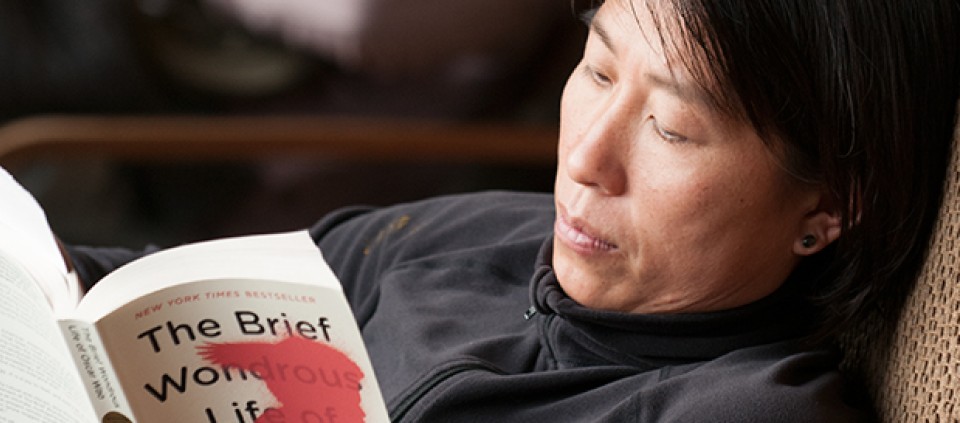Human, Being

Have you heard about the MIT rats who got smarter by chilling out?
In 2006, researchers at the Massachusetts Institute of Technology (MIT) placed rats in a difficult maze to see how quickly they’d find their way through. The first group of rodents, once they’d made it to the cheese at the end of the tunnel, was forced to keep re-running the route until they knew it by heart and could complete it quickly.
The second group of rats was given time to relax in between maze runs. Interestingly, the researchers found that this group, which took breaks and did nothing between efforts, learned the route much faster.
I heard this story from Tal Ben-Shahar, my teacher in Kripalu’s Certificate in Positive Psychology program, who used it to illustrate the notion that all forms of learning require that we take time off for reflection, integration, and the fortification of new neural pathways.
A related argument comes from Tony Schwartz and Jim Loehr, authors of The Power of Full Engagement, who cite research showing that, for optimal performance, between one and two hours of focused work should be followed by at least 15 minutes of recovery. Apparently, working really hard for more than two hours without a break can actually lead to diminished or negative results.
Deep down, I think I must have known these things, but only recently did I step out of my own maze to test them out.
I am an entrepreneur, which is a fancy way of saying that I’m self-employed. My income is dependent on my efforts, and this means that I often feel I should be continually marketing, packaging, selling, or delivering my services. This semester, I’m also enrolled in two training programs, making my plate even fuller.
Last month, I felt myself spinning out of control with worries about my seemingly endless to-do list of present and future projects and obligations. When I did take breaks from the constant productivity, I often felt conflicted, constantly aware of that overwhelming task list. These nagging thoughts made it hard to focus on my studies, too, and I wasn’t giving myself permission to be a student.
One Sunday morning, I woke up to the sound of rain outside my window and made a decision. I was going to stay off the computer, make a pot of tea, grab that novel I’d been wanting to read, and get back into bed. I wasn’t sick. I was just sick of treating myself like a worker bee.
In bed with my book, I felt like a kid again—the little girl who holed up in her princess-themed room with The Secret Garden, Harriet the Spy, or grandma’s Nancy Drew mysteries, and reveled in her own private world. It was cozy, peaceful, and very satisfying.
Later in the day, I put on some jazz and cooked a Sunday dinner full of comfort food for me and my husband. After we ate, I curled up beside him on the couch and watched football, letting go of any need to understand the rules of the game.
Not once did it cross my mind that I should be doing anything other than exactly what I was doing in each moment. As I climbed back into bed that night, I felt a sense of what can only be called contentment.
But that’s not even the best part of my experiment.
The next morning, I awoke and realized that something was missing. Gone was the nagging feeling that there was so much to do and so little time. No tasks or deadlines had been taken off my plate, yet I felt completely calm and confident that everything would get done in time.
I spent that day in a state of efficient, unhurried productivity. I was full of good ideas, checking items off the to-do list with ease and wondering what had happened to the woman who was so stressed out and worried.
Of course, she reappeared within 48 hours, which is why I need to put what I learned that day into regular practice.
This means taking breaks to stretch, call a friend, pet the cat, dance to music, take a walk, or make some tea after an hour or two at the computer. The truth is, some of my best ideas come to me, unbidden, when I’m away from the laptop and enjoying myself.
My new plan also includes scheduling work-free zones on weekends and evenings, and protecting them like a fierce mama bear. When I’m in those zones, I also need to protect myself from thoughts that I “should” be doing something more productive. That inner tyrant is the greatest enemy of inner peace.
Perhaps my best takeaway from that rainy Sunday, besides really seeing the benefits of resting and renewing, is the message that it gave me on a soul level about my inherent value as a human, just being.
Kim Childs is a Boston-based life and career coach and writer who specializes in Positive Psychology. She is also a Kripalu Yoga teacher and facilitator of workshops based on The Artist's Way: A Spiritual Path to Higher Creativity, by Julia Cameron.
© Kripalu Center for Yoga & Health. All rights reserved. To request permission to reprint, please e-mail editor@kripalu.org.
Kim Childs is a Boston-area life and career coach specializing in Positive Psychology, creativity, and spiritual living. She writes for Kripalu.
Full Bio and Programs